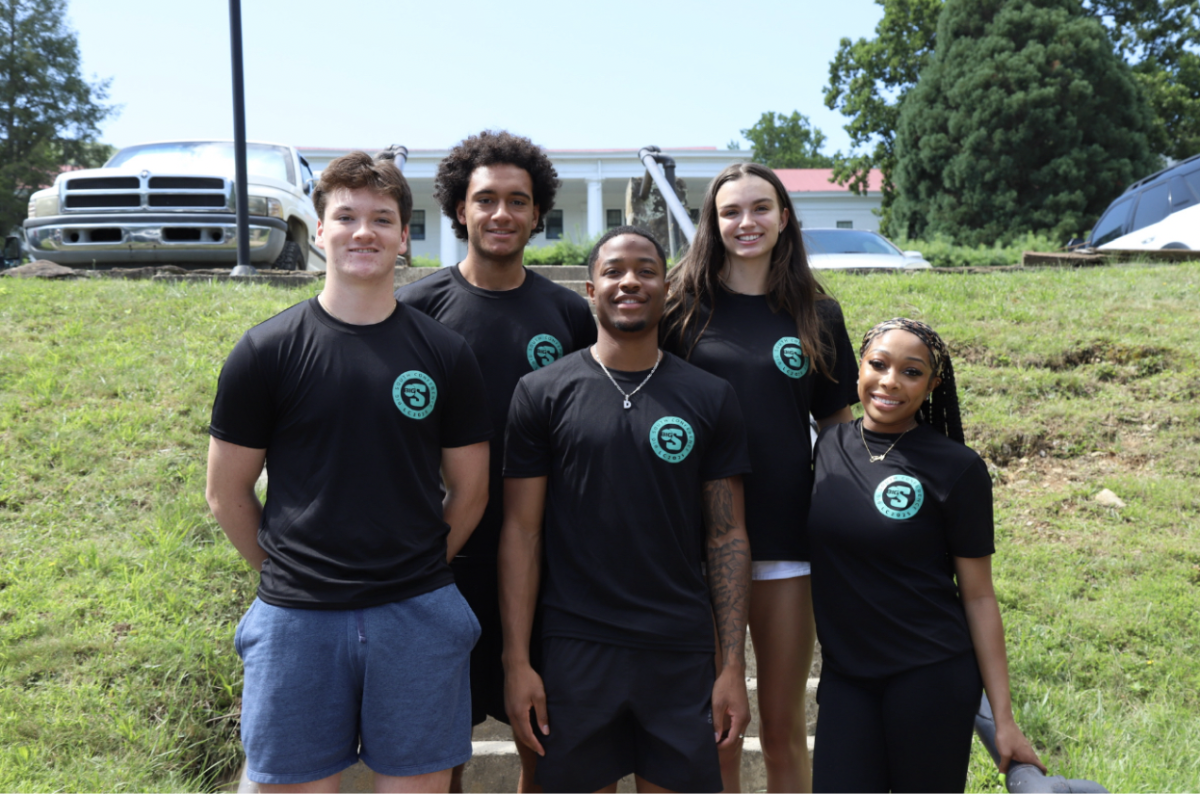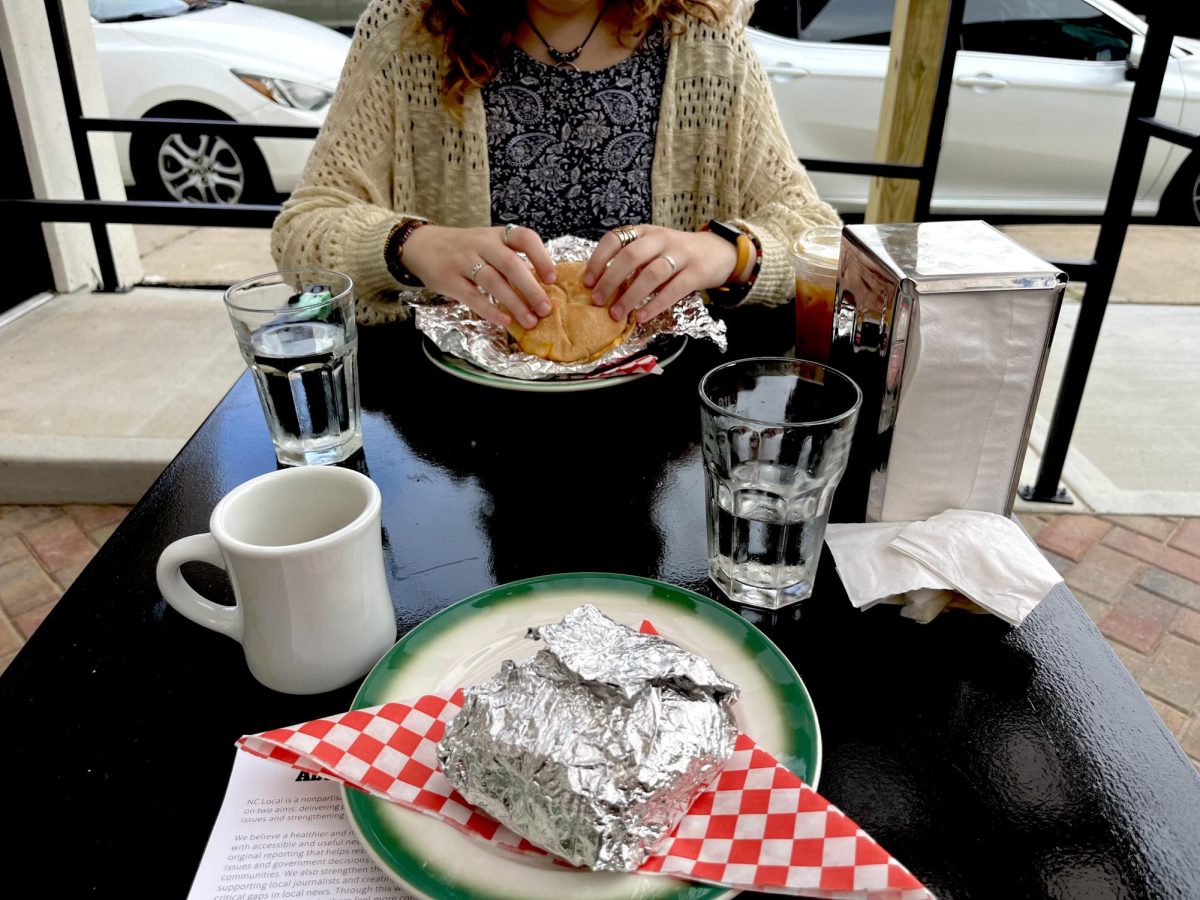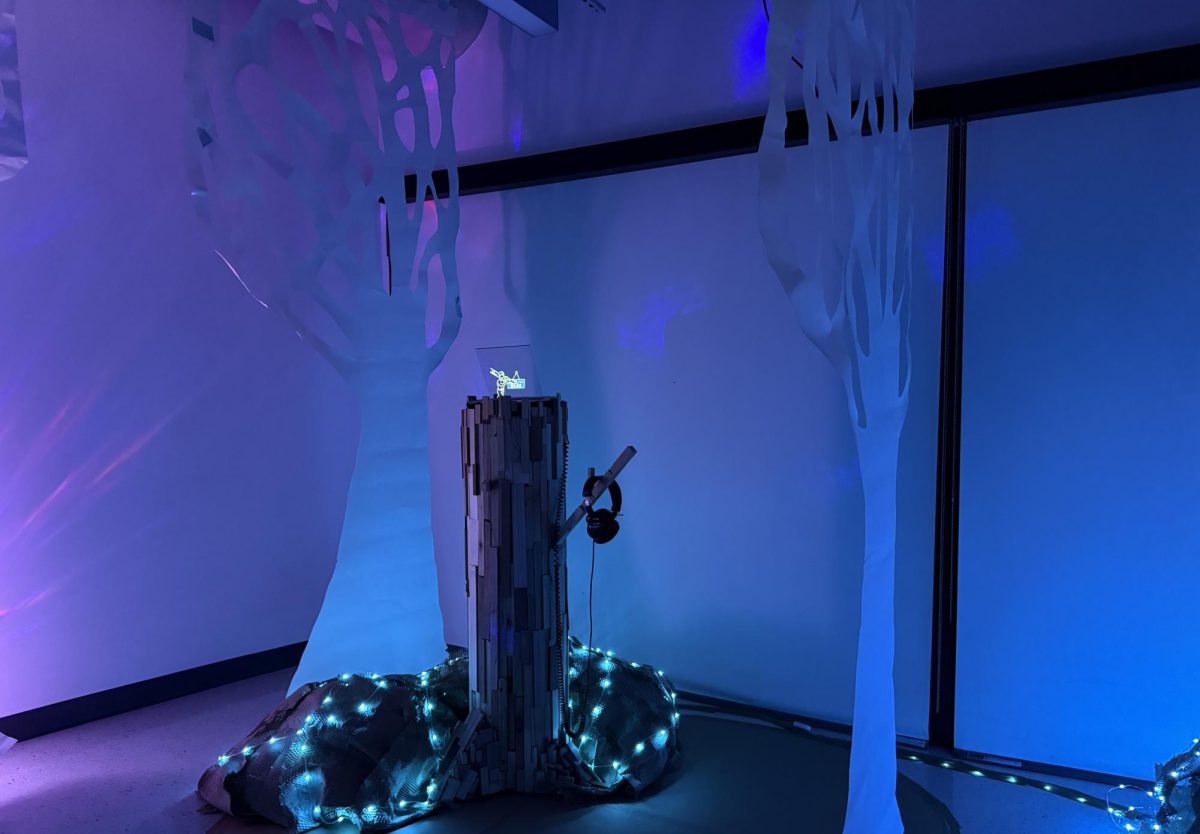By Valerie McMurray and John Armstrong | Sept. 24, 2014 |
As a recently completed part of a continuing sustainability efforts, UNC Asheville unveiled the solar array located on the roof of Overlook Hall last Friday.
The 112 panels will generate 50,000 kilowatt hours of electricity per year, powering the equivalent of 250 or more computers, roughly the same number as students housed in Overlook.
Sonia Marcus, director of sustainability, said part of the incentive for the project is the UNC system’s commitment to carbon neutrality.
Bringing other major energy consumers to the area provides another reason.
“If we want to, in North Carolina, attract world-class companies like Google, QVC or Apple, all of which power their N.C. operations with solar energy, then we need to continue to thrust towards clean energy,” said John Pierce, vice chancellor for finance and operations.
Blair Schooff, Strata Solar’s vice president of business development and marketing, announced they will donate more panels to the university in the future.
UNCA representatives recently signed a memorandum of understanding with the city of Asheville to begin collaborating in four areas of mutual interest, according to Marcus. One is environmental sustainability, another with climate and energy.
Just how they will collaborate is yet to be determined, Marcus said.
Pierce and Joe Urgo, UNCA provost, are forming a sustainability council expected to determine strategic priorities for future green efforts.
At the same time, Pierce said the university is working on a $3 million performance lighting contract, which will be funded by the savings from previous energy saving projects.
As for the solar array, what seemed like a modest project became a six-year process, according to Pierce.
“It has been a long and winding process,” Pierce said. “We started with the concept of solar panels for hot water. We were going to serve 300 beds here. We were going to pipe it over to Governors Hall, possibly to Governors Village — but it was a lot of piping, a lot of hot water storage — it was a pretty complicated type of thing.”
The university first looked into state tax credits to finance the solar project back when it was just a concept, but found the credits more suitable for larger projects.
Tax credits provide a good incentive to implement clean energy, but it’s still uncertain how long the credits will be in place, Pierce said.
They discussed involving private investors, but the complications developing contracts for private investment on state property deterred the university from taking that route, according to Pierce.
Finally Strata, the leading North Carolina solar company, agreed to contribute.
“We typically over purchase for the farms we construct and more often than not we will house spare panels for each farm we have,” Schooff said.
UNCA’s solar array project completed faster compared with other in-state universities.
“We had two other projects, one with UNC Chapel Hill and one with N.C. State that started long before this, and they’re not even close to getting it done,” Schooff said.
Bill Haggard, vice chancellor for student affairs, said the rooftop lounge was almost cut due to costs. Additional funding for the room was allocated after students requested to keep the lounge.
Attendees of the opening ceremony saw a live feed from the panels via video teleconference from the mechanical room.
UNCA’s Student Environmental Center plans to help install an interactive panel in the main lobby of Overlook Hall providing data from the impact of the array on energy usage.
The interactive panel, like SEC’s other campus contributions, is funded by green fees, the portion of student tuition allotted toward sustainability efforts.
“Once the data is available, the solar project won’t just be a project to help our environmental impact, but also will be an educational resource,” said Dan Pungello, SEC co-director and transfer sophomore.


![Brooke Pedersen [second from the right] and Luis Reyes [right] hold banners during the Wrap The Woods event.](https://thebluebanner.net/wp-content/uploads/2025/09/ELIZABETH_PRITCHITT_IMG_3470-1200x804.jpg)















